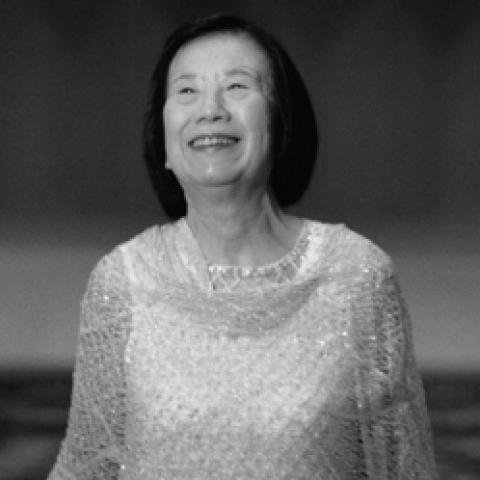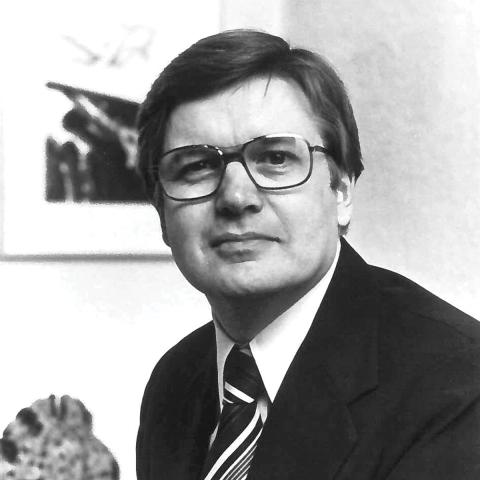
Nunc Dimittis
Wilbur R. Dodge, 83, died November 20, 2017, in Binghamton, New York, an engineer, physicist, professional photographer, English country dancer, organist, organbuilder, and organ technician. He graduated from Clarkson University and Harpur College (now Binghamton University) with degrees in electrical engineering and physics and followed in his father’s footsteps working at Ansco Film Company. With Norman Smith, he started their company, R D & D before he moved on to Link Aviation where he worked on simulators for the Gemini and Apollo missions.
Dodge was a member of the choir and guest organist for various churches in the community including Trinity Memorial and Christ Churches. He also maintained and tuned pipe organs in churches throughout the region. He was dean of the Binghamton Chapter of the American Guild of Organists, 1999–2001.
Wilbur R. Dodge is survived by his partner, Anneliese Heurich; children: Glenn Burch (Bellefonte, Pennsylvania), Michael and Tammy Burch (Deland, Florida), Barbara Burch (Paisley, Florida), and Laura Appleton (Binghamton); several grandchildren and great-grandchildren. A memorial service was held at Christ Episcopal Church in Binghamton on January 20.
Mark Coan Jones died December 24, 2017. Born February 25, 1957, in Asheville, North Carolina, he studied organ with Marilyn Keiser and with Donna Robertson at nearby Mars Hill College. For the past 22 years, Jones was director of music and organist for The Pink Church (First Presbyterian Church), Pompano Beach, Florida. He previously served St. Nicholas Episcopal Church, Pompano Beach; First Presbyterian Church, Newton, North Carolina; and Trinity Episcopal Church, Asheville.
Jones appeared with the Florida Philharmonic, New World Symphony, Lynn University Conservatory Orchestra, Young Artists Chamber Orchestra, Palm Beach Atlantic Symphony, and Miami Bach Society, and in collaborations with chamber groups and area choruses, including the Nova Singers, Florida Philharmonic Chorus, Master Chorale of South Florida, Masterworks Chorus of the Palm Beaches, Fort Lauderdale Christian Chorale, and Gay Men’s Chorus of South Florida. He arranged music for organ and brass and performed with the Dallas Brass, Avatar Brass, Empire Brass, Lynn Conservatory Brass, and Eastman Brass. He performed extensively across Europe, Scandinavia, and Russia, in collaborations and solo recitals.
Jones’s organ compositions have been performed in venues across the United States and in Europe, and have been broadcast nationally. His Three Lenten Hymn Meditations, Trumpet Tune in D, and Lenten Hymntunes have been recorded and performed by various organists.
From 2006 through 2014, Mark was principal accompanist for the von Trapp Children, the great-grandchildren of the singing family made famous by the Rodgers & Hammerstein movie The Sound of Music. His solo appearances and concerts with the von Trapps included performances around the world.
Mark Coan Jones is survived by his parents Hubert Mack and Shirley Williams Jones of Asheville, his sister Suzanne Jones Hamel and husband Richard Anson Hamel of Covington, Kentucky, and his partner Hilarion (Kiko) Suarez Moreno of Deerfield Beach, Florida.
Yuko Hayashi died January 7 in Salem, New Hampshire, at the age of 88. She was born in Hiratsuka, Japan, on November 2, 1929. For more than 40 years she was professor of organ at the New England Conservatory and department chair for 30 years. As a performer, she concertized extensively on three continents—Asia, North America, and Europe—giving recitals and masterclasses in Japan, South Korea, the United States, Holland, Germany, Belgium, Austria, Switzerland, Denmark, Italy, Spain, and Portugal. She was the recipient of the coveted Arion Award from the Cambridge Society for Early Music as an “outstanding performer and master teacher of the historical organ.” She was also awarded the Distinguished Alumni Award from the New England Conservatory.
Hayashi graduated with a degree in organ performance from Tokyo University of the Arts in 1948 and for five years was organist for the symphony orchestra of NHK, the Japanese national broadcasting company. She came to the United States in 1953 on scholarship, sponsored by Philanthropic Educational Organization and studied for one year at Cottey College in Nevada, Missouri. She then transferred to the New England Conservatory in Boston where she was awarded three degrees in organ performance: Bachelor of Music, Master of Music, and Artist Diploma. In 1960 she began teaching at the conservatory and was appointed chair of the department in 1969 by then president Gunther Schuller. Her primary teachers were George Faxon, Donald Willing, Anton Heiller, and Gustav Leonhardt (harpsichord).
Her frequent travels to Europe began in 1966 when she went to the Haarlem Organ Academy in the Netherlands and began life-long associations with Anton Heiller, Luigi Tagliavini, and Marie-Claire Alain. In 1971, she studied with Michel Chapuis in France and was introduced to many historic organs in North Germany and Holland by Harald Vogel and Klaas Bolt. This was the beginning of many exchanges of concerts and masterclasses across the Atlantic Ocean between Boston and Europe. It was during this time that Hayashi became organist of Old West Church in Boston, performing on a new mechanical-action organ built by Charles B. Fisk. She served as organist there for nearly 40 years and was the founder and executive director of the Old West Organ Society until her retirement in 2010.
Beginning in 1970, Hayashi crossed the Pacific Ocean yearly to give recitals and masterclasses in Japan. With Italian organist Umberto Pineschi and the assistance of Japanese organ builder Hiroshi Tsuji and his wife Toshiko Tsuji, she founded the Italian Organ Academy in Shirakawa. She was influential in persuading organ committees from universities, churches, and concert halls to commission mechanical-action organs from organbuilders from around the world. Most noteworthy are the instruments for International Christian University (Rieger), Toyota City Concert Hall (Brombaugh), Minato Mirai Concert Hall, Yokohama (C. B. Fisk, Inc.), and Ferris University, Yokohama (Taylor & Boody, Noack Organ Company, and J. F. Nordlie Pipe Organ Company organs).
In 1989, Yuko Hayashi took a leave of absence from the New England Conservatory to accept a position as professor of organ at Ferris University, Yokohama. She taught there for six years before returning to Boston. She also became titular organist at St. Luke’s International Hospital Chapel, which houses an organ built by Marc Garnier of France. She was responsible for relocating a historic 1889 organ built by Hook & Hastings to St. Andrew’s Episcopal Cathedral in Yokohama where her father served as priest for many years.
Yuko Hayashi is survived by two brothers, Makoto Hayashi and Satoru Hayashi, and several nieces and nephews, all residing in Japan. A memorial service for Yuko Hayashi will be held at Christ Church, Andover, Massachusetts, April 28, at 11:00 a.m. Memorial contributions may be directed to: Old West Organ Society, c/o Jeffrey Mead, Treasurer, 72 Trenton Street, Melrose, Massachusetts 02176; St. Andrew’s Cathedral, 14-57 Mitsuzawa-shimo-cho, Kanagawa-ku, Yokohama City, Kanagawa, 221-0852, Japan; or St. Luke’s International Hospital Chapel, c/o Organ Committee, 9-1 Akashi-cho, Chuo-ku, Tokyo, 140-8560, Japan.
Pierre Pincemaille, 61, died, January 12, an international concert organist, church organist, music professor, and composer. Born in Paris, France, December 8, 1956, Pincemaille was awarded five first prizes at the Conservatoire National Supérieur de Musique de Paris (harmony, counterpoint, fugue, organ interpretation, and organ improvisation) and won five international improvisation competitions: Lyon (1978), Beauvais (1987), Strasbourg (1989), Montbrison (1989), and Chartres (1990).
In 1987, Pierre Pincemaille was appointed titular organist of the prestigious 1841 Cavaillé-Coll at the Gothic Saint-Denis Cathedral-Basilica. He loved accompanying beautiful liturgy there, amidst the tombs of the Kings of France. Highly inspired by Pierre Cochereau, Pincemaille founded a concert series there, from 1989 to 1994. For his 30th anniversary there, he performed his last concert on November 5, 2017, programming choral works he cherished, conducted by Pierre Calmelet: Louis Vierne’s Messe Solennelle and three of his own recently composed vocal motets (to be published), as well as J. S.
Bach’s Pièce d’Orgue, BWV 572, symbolizing for him the three periods of life.
Pierre Pincemaille also performed with orchestras under the direction of conductors such as Mstislav Rostropovitch, Myung-Whun Chung, Riccardo Muti, Charles Dutoit, and John Nelson. His recordings include the complete organ works of Maurice Duruflé and César Franck, Charles-Marie Widor’s ten symphonies, selected pieces by Jehan Alain, Pierre Cochereau, Olivier Messiaen, and Louis Vierne, his own improvisations and transcriptions of Stravinsky’s The Firebird and Petrushka, as well as works with orchestra by Camille Saint-Saëns, Hector Berlioz, Joseph Jongen, and Aaron Copland. Several of Pierre Pincemaille’s compositions were published: Prologue et Noël varié [Prologue and Variations on a Noel] (Sampzon, Delatour France, 2007), a 4-voice a cappella Ave Maria (Lyon, À Coeur Joie, 2013), and En Louisiane for trombone and piano (Delatour France, 2017).
Recently, Pierre Pincemaille taught counterpoint at the Conservatoire National Supérieur de Musique de Paris, harmony at the Conservatory in Saint-Germain-en-Laye, and organ improvisation at the Conservatory in Saint-Maur-des-Fossés for the past 17 years. For the past 14 years, he formed a generation of French and foreign organ improvisers, many who have won prizes in international competitions: among them, six Parisian organists: David Cassan (at the Oratoire du Louvre), Thomas Lacôte (La Trinité), Samuel Liégeon (St.-Pierre-du-Chaillot), Hampus Lindwall (St.-Esprit), Baptiste-Florian Marle-Ouvrard (St.-Eustache), and Olivier Périn (St.-Paul-St.-Louis).
Among his honors and distinctions, Pierre Pincemaille was a Knight in the following three orders: the Academic Palms, Arts and Letters, and St. Gregory the Great.
Pierre Pincemaille is survived by his wife, Anne-France, and their three children, Claire, Marc, and Éric.
—Carolyn Shuster Fournier, Paris, France




